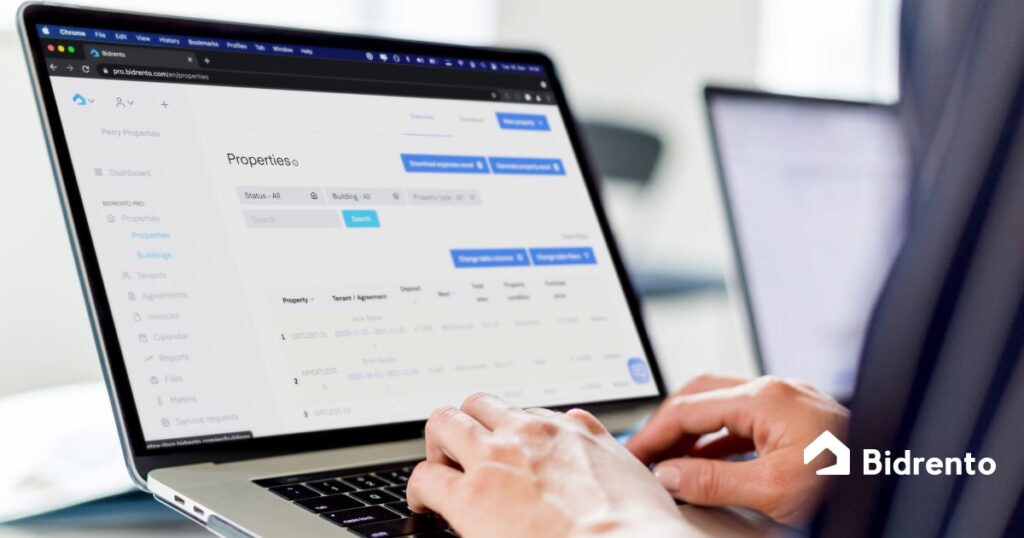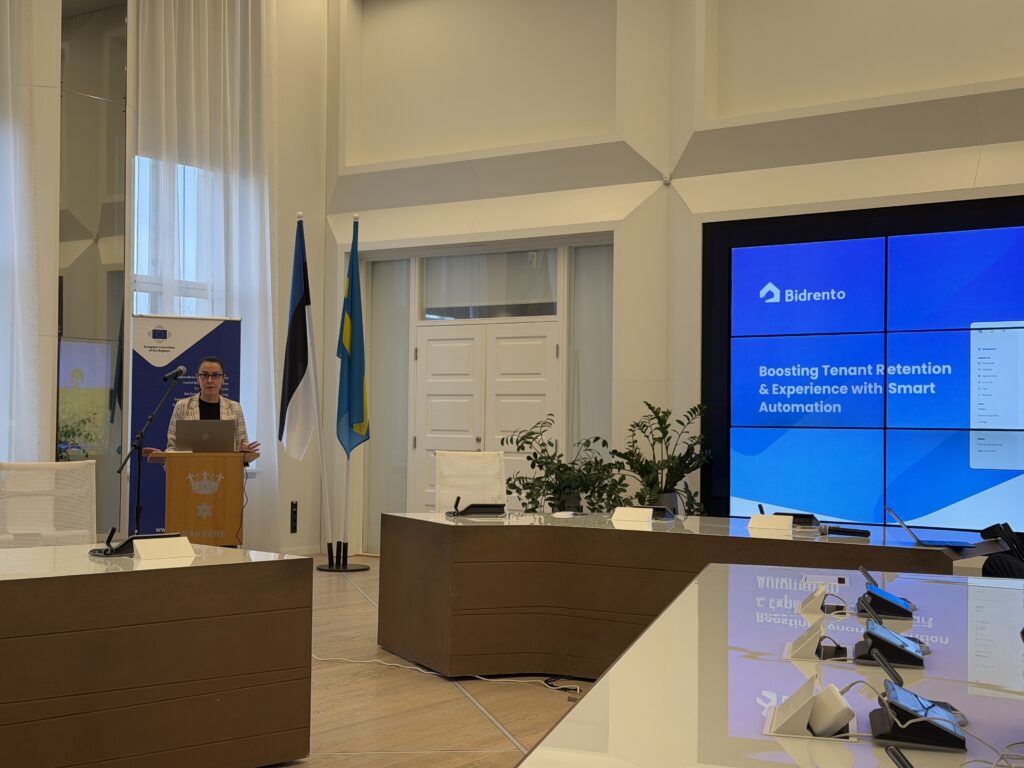Tired of dealing with scattered lease documents, missed deadlines, and costly errors? Managing a large property portfolio isn’t easy — especially when relying on outdated tools that leave you guessing and second-guessing. Every missed detail or miscalculation takes a slice out of your profits and peace of mind. A lease management system is the backbone of successful property portfolios, especially as they grow.
Lease management should keep your portfolio organised, reduce risks, and give you data that’s ready at a moment's notice. Old systems, like spreadsheets, aren’t built for this level of precision. They slow you down, increase errors, and make it tough to respond to the fast shifts in property markets.
Why Outdated Tools Fall Short
Manual data entry is a common practice in lease management but brings with it an inherent risk of errors. While a single error might seem small, in a portfolio of hundreds or thousands of leases, even a minor mistake can escalate into a larger issue. These errors translate to wasted time, lost revenue, and sometimes legal headaches.
- Error-Prone Entries: Studies show that manual data entry in spreadsheets has a 1% to 2% error rate. In a portfolio of 2,000 leases, that could mean 20–40 mistakes a month—each one a potential costly error.
- Hidden Costs: Portfolio managers report losing up to $1,000/€950 per missed lease update due to outdated rate adjustments or missed renewal deadlines.
- Data Loss Risks: Without a centralised platform, 47% of property managers say they’ve faced data loss or disorganisation that impacted operations or audits.
Why Big Portfolios Need a Single System
Large portfolios often include complex leases with scheduled rent increases or cost adjustments tied to specific dates or market indicators. When these adjustments are missed, revenue opportunities slip through the cracks. Many property managers report losing thousands each year due to missed updates, all because old systems lack automated reminders.
The bigger the portfolio, the more you need a system that brings everything together. A centralised lease management platform isn’t just about storing information. It’s about cutting down on wasted time and lost money. Here’s how:
- Quick Access to Lease Data: With a centralised system, all lease data is in one place. Managers don’t waste time searching through files and emails. They know where everything is and can pull up information in seconds.
- Automatic Alerts for Important Dates: The system keeps track of deadlines and sends alerts for things like rent increases or lease renewals. This helps avoid costly delays and missed opportunities.
- Easy-to-Read Financial Reports: A central platform can show you trends, occupancy rates, and revenue numbers. This gives you clear insights and helps with planning and reporting.
Property managers handling large portfolios need tools that reduce stress and improve accuracy. A good lease management platform keeps things simple, accurate, and accessible. It means fewer errors, quicker access to data, and more time to focus on growing the portfolio and making informed decisions
Compliance and Regulatory Challenges
Compliance is a complex and ever-evolving part of lease management, especially for portfolios spread across different regions. Each location may have unique legal requirements for tenant relations, environmental standards, and safety regulations. Missing compliance updates is not only risky but costly, with fines and potential damage to reputation.
- Heavy Penalties for Missed Compliance Deadlines: The costs of non-compliance can be significant. According to PwC, non-compliance with local property regulations often results in fines ranging from $1,000 to $10,000 per violation.
- Time-Consuming Documentation Processes: Gathering and updating compliance documents for each property is labour-intensive. In an environment of strict regulations, any oversight can delay approvals and lead to regulatory issues.
- Difficulty Staying Updated: Regulations change frequently, and manual systems can’t keep up with these changes efficiently. Large portfolios that lack automated compliance tracking face higher risks and costs, especially when regulations are updated.
A centralised lease management system can address these issues, reducing error rates, increasing revenue, and simplifying compliance. By moving away from outdated tools and adopting a unified approach, property managers can focus on growth and profitability while reducing risks and inefficiencies.
The Bidrento Advantage

Bidrento is built for the complexity of large portfolios, with automated systems that do the heavy lifting. Here’s how it stands out:
- Centralised Lease Data: All lease data is in one place, cutting down time spent searching or verifying numbers. You can access it anytime, and trust it’s up-to-date.
- Automated Reminders: Never miss a rent increase or contract renewal. Bidrento’s reminders keep everything on schedule.
- Financial Insights at a Glance: Quickly see income trends, occupancy rates, and other key metrics so you’re always ready for strategic decisions.
"Bidrento has automated all key aspects of our CRE operations, from invoicing and cost allocation to rent indexation and deadline management. Everything is streamlined, saving us time and reducing errors. As a bonus, the maintenance module allows our facility managers to handle preventive tasks efficiently." - Alexander Novak, Commercial Real Estate Manager
Smart property managers want tools that make their jobs easier and more profitable. Bidrento puts you in control, turning lease management from a chore into an opportunity for growth and precision.
What Does Lease Management Mean for Big Players?
Lease management, sometimes called lease administration, is the organised way of handling a company’s leases for properties, equipment, and other assets. It covers each stage of a lease, from signing and setting up rent payments to renewing or ending the lease when needed. Good lease management keeps track of payments, controls costs, and helps companies stay within the rules.

Managing a big property portfolio is like holding a deck of cards. Lose track of a single one—like a rent increase, a renewal date, or a lease term—and it disrupts the whole hand. Large portfolios need more than spreadsheets and scattered files to keep everything running smoothly.
Lease management involves a lot of tasks. It includes making sure rent payments are on time, updating lease terms, arranging repairs or maintenance, and communicating with tenants. Lease managers create summaries, known as lease abstracts, that store key details in a quick-access format. This makes it easy for different departments—like finance, legal, and operations—to find the information they need.
For companies with many leases, lease management software is very helpful. These tools keep all data in one place, send reminders about deadlines, and store important documents. This software makes it easier to avoid mistakes, organise information, and meet new accounting standards, which requires companies to list lease costs on financial reports for transparency.
Hidden Costs of Outdated Lease Management
Using old systems like spreadsheets and basic software doesn’t just slow down work; it eats into profits. Here’s how outdated tools increase operational costs:
- Higher Labour Costs: Manual processes increase labour costs as employees spend hours on repetitive tasks. A study found that large portfolios lose 30% more time on manual work compared to those with automated systems. Every hour spent on data entry or document searches means less time on strategic planning and tenant engagement.
- Slow Response to Market Changes: Delays in decision-making can lead to missed opportunities. According to McKinsey, businesses relying on manual processes experience response times up to 40% slower than those using automated systems. In property management, these delays can impact rent adjustments, renewals, and other key income opportunities.
- Inconsistent Records: Without centralised data, information often ends up inconsistent or outdated, leading to issues like incorrect billing or missed updates. This lack of reliability in records hurts tenant relationships and can lead to revenue loss.
Core Lease Management Tasks for Large Portfolios
Managing leases in a large portfolio involves handling multiple tasks simultaneously. Here are the main areas that need consistent attention:
- Rent Tracking and Adjustments: Rent schedules and lease adjustments vary, especially in large portfolios. Missing a rent increase or forgetting an adjustment directly impacts revenue. Automated reminders for rent updates help avoid these losses.
- Tenant Communications: With hundreds of tenants, keeping communication organised is challenging. A centralised system that records tenant interactions helps address requests quickly, resolve issues, and maintain positive relationships across the portfolio.
- Compliance with Regulations: Compliance requires up-to-date knowledge of local property laws and regulations. Missing a regulation update or deadline can result in fines. A centralised system with automated compliance tracking reduces the risk of fines and keeps everything in order.
The Struggles of Lease Management with Spreadsheets
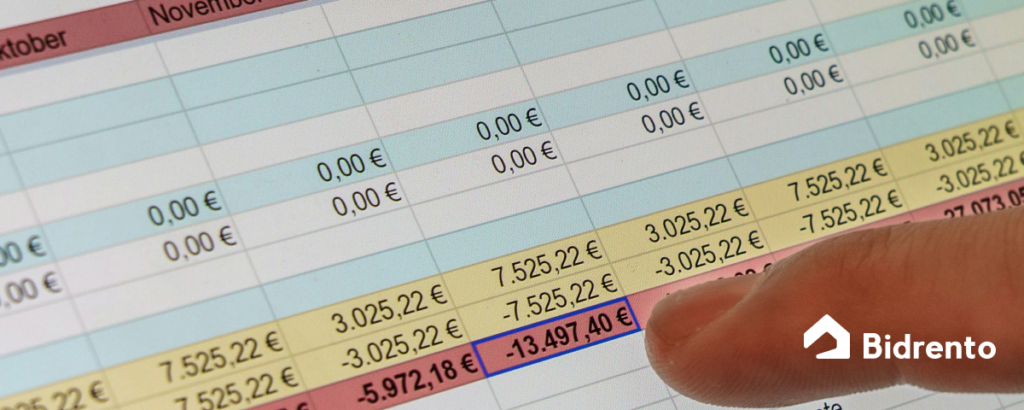
1. Errors That Keep Piling Up
Using spreadsheets for lease management may work for small portfolios, but as the number of properties grows, so do the chances of making costly mistakes. With every manual entry, the risk of human error increases, and in large portfolios, even a small error can cascade into big problems. Research shows that nearly 90% of spreadsheets contain errors, which can mean missed payments, incorrect rent adjustments, or forgotten renewal dates. Fixing these mistakes takes time and often leads to delays that affect tenant relationships and cash flow.
2. Constantly Scattered Information
Spreadsheets and old software usually mean dealing with separate files for each lease, making it hard to access the information you need in one go. Lease data often ends up scattered across different files and departments, creating confusion. Property managers lose valuable time hunting for records instead of focusing on improving operations. According to studies, 47% of property managers without a centralised system face data loss and disorganisation that impact audits and daily tasks.
3. Time Wasted on Manual Tasks
With older systems, there’s no automation for routine tasks, like sending rent reminders or tracking renewal dates. Every action has to be done manually—updating rates, renewing leases, or adding late fees. For large portfolios, this manual workload quickly becomes overwhelming. Research from Deloitte shows that property managers with manual systems spend up to 30% of their time on repetitive lease management tasks, pulling them away from strategic planning.
4. Lack of Real-Time Updates and Insights
Old tools don’t provide real-time data. When information is outdated, property managers lack visibility into rent collection, occupancy rates, and compliance status. This makes it harder to spot trends, adjust to market shifts, or address issues before they grow. A McKinsey study found that businesses using outdated systems have up to 40% slower response times, leading to missed income opportunities and unaddressed tenant issues.
5. Compliance Risks and Costly Penalties
Compliance requirements for property portfolios are complex and vary by location, with strict deadlines for document renewals, safety checks, and tax payments. Spreadsheets and old software don’t provide alerts for these deadlines, making it easy to miss critical updates. Non-compliance comes with steep penalties that can significantly impact a portfolio’s profitability, especially when issues go unnoticed until it’s too late.
Managing hundreds of properties is tough. Each property comes with its own leases, rent schedules, maintenance needs, and tenant issues. Without the right tools, keeping up with all these details can be a full-time job. For large property managers, a modern lease management system makes everything easier, bringing all key tasks into one place and cutting down on errors and wasted time.
Key Features of a Lease Management System
When choosing a lease management system, certain features make a big difference in how smoothly things run. A modern system should simplify work by keeping data organised, providing easy access to reports, and helping managers handle tenant needs and compliance deadlines with minimal hassle. Here are the main features that make a lease management system effective for large portfolios—and why Bidrento excels in these areas:
Key Features of a Modern Lease Management System
- Automated Rent Tracking and Adjustments: Rent schedules, late fees, and lease renewals all require close attention. A good system automatically tracks due dates, sends reminders, and adjusts for rent increases, so nothing slips through the cracks. With automated rent tracking, property managers save time and reduce the risk of missed income.
- Tenant Communication Tools: Managing communication with tenants across many properties is easier when everything is stored in one place. An effective system keeps track of tenant messages, service requests, and any issues that arise. Having a clear record of communication makes it simple to address problems, leading to happier tenants and smoother operations.
- Compliance Reminders: Compliance deadlines vary depending on location and property type. A modern lease management system provides automatic alerts for inspections, document renewals, and other key compliance dates, helping managers avoid fines and keep their properties in line with local rules.
- Real-Time Financial Reports: Access to up-to-date financial data is key to good decision-making. A centralised system gives managers a clear view of occupancy rates, cash flow, and revenue trends across all properties. With this insight, they can spot issues early and make informed choices to improve their portfolio.
- Task Management and Maintenance Tracking: Keeping up with maintenance needs across a large portfolio requires good organisation. A lease management system with task management tools helps managers schedule repairs, track progress, and ensure that each property remains in good condition. These tools are especially valuable for preventative maintenance, which keeps costs down over time.
Why Bidrento Stands Out
Bidrento is designed to handle the needs of large property portfolios, bringing all these features into a single, user-friendly platform. Here’s why it’s a top choice for portfolio managers:
- Easy-to-Use Interface: Bidrento offers a clean and easy-to-navigate design, so managers can quickly find and update information without unnecessary steps.
- Advanced Reporting: Bidrento provides real-time financial reports, tenant insights, and occupancy data, allowing managers to keep track of their portfolio’s performance at a glance.
- Centralised Tenant and Lease Data: With Bidrento, managers can access all lease and tenant data in one place, making it easy to respond to tenant requests and handle lease updates without searching through multiple systems.
- Automation Across Tasks: From rent tracking to compliance reminders, Bidrento automates routine tasks, freeing up time and reducing the risk of errors.
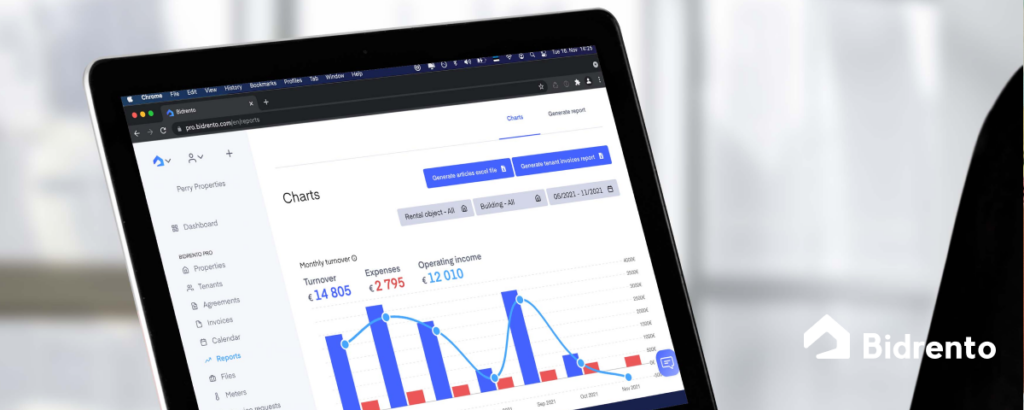
Comparing Different Lease Management Systems and Practices
| Feature | Spreadsheets | Old-School Software | Bidrento |
| Data Accuracy | Prone to manual errors, especially in large datasets | Slightly better, but limited in managing complex data inputs | Automated checks and updates reduce errors significantly |
| Data Centralisation | Data is often scattered and hard to keep consistent | Centralised but lacks flexibility for scaling | Fully centralised data; accessible from any location in real-time |
| Automation | No automation; all tasks must be updated manually | Minimal automation, limited to basic reminders | High automation: schedules, rent adjustments, and compliance alerts are all automated |
| Scalability | Suitable for small portfolios only | Limited scalability; tends to slow down with large data | Designed for large portfolios with easy scalability across hundreds of properties |
| Ease of Use | Simple but lacks structure for complex tasks | Often outdated user interfaces, with limited flexibility | Modern, user-friendly design with customisable features |
| Data Access for Teams | Restricted access; sharing is manual and time-consuming | Basic access, limited collaboration tools | Full team access with real-time collaboration and data updates |
| Compliance Tracking | No built-in compliance reminders | Basic compliance tracking; manual updates needed | Automated compliance tracking with alerts for deadlines and regulatory changes |
| Reporting and Financial Insights | Basic charts, lacks advanced reporting features | Limited reports; manual processing for most data | Advanced, real-time financial reporting, occupancy rates, and trend insights |
| Cost Efficiency | Low upfront costs but high risk of hidden costs due to errors | Moderate cost but low flexibility and adaptability | Cost-effective for large portfolios; saves time and reduces risk of errors |
| Tenant Communication | Manual tracking and updating | Basic tenant tracking, no built-in communication tool | Centralised tenant management with communication tracking for consistent interactions |
Summary of Key Benefits
- Reliable Rent Tracking: Rent adjustments and lease renewals happen on time, maximising income.
- Organised Tenant Interactions: A single system manages tenant requests and improves communication, which builds better relationships.
- Real-Time Financial Insights: Access to up-to-date financial information supports faster decision-making across the portfolio.
Keeping lease information organised, easy to find, and up-to-date gets harder as portfolios grow. Sign up for a free demo of Bidrento to see how a centralised system can make lease management easier, cut down errors, and help improve tenant communication across your properties
.
Growing a Portfolio? Here’s Why Your Lease Management Needs an Upgrade

Handling a growing portfolio of properties is a challenge. With each new lease, the tasks and responsibilities pile up. Outdated systems make it harder to keep track, leaving you open to missed deadlines, compliance issues, and lost revenue. If you’re scaling up, it’s time to consider a system that grows with you.
As portfolios grow, the demands on lease management increase. More properties mean more leases, complex financials, additional tenants, and stricter compliance requirements. Older tools like spreadsheets or basic software were not built for these growing needs. Property managers facing portfolio expansion need an efficient system that streamlines processes, keeps data accessible, and prevents the risks that come with managing numerous properties.
Common Issues in Expanding Portfolios
As portfolios expand, the cracks in old systems become more visible. Here are a few of the problems that property managers often face when relying on outdated tools:
- Delayed Decision-Making: As lease data becomes harder to track, managers face delays in making decisions. Accessing scattered data or waiting for updates slows down responses, leading to missed market opportunities or costly errors. Studies show that companies using outdated systems report up to 30% slower response times than those with automated solutions.
- Manual Workload Increases: With each new lease, the manual workload grows. Every entry and adjustment require manual updates, leading to a repetitive and time-consuming process. A Deloitte survey found that property managers spend 25-35% of their time on manual lease administration tasks, reducing the time available for strategic planning-
- High Risk of Missed Compliance: Expanding portfolios face more complex compliance needs, with each property potentially in a different regulatory environment. Managing compliance deadlines or adjusting to new rules becomes challenging when using outdated systems that lack automated tracking.
How Modern Lease Management Simplifies Expansion
An advanced lease management system provides tools that support portfolio growth and ease the pressure of expanding operations. Here’s how:
- Automation Saves Time: With automated workflows, reminders, and updates, lease management software reduces the manual workload and keeps processes on track. Instead of entering and updating each detail manually, property managers benefit from automation that handles the repetitive work, freeing up time for other tasks.
- Clear Financial Insights for Growth Planning: Modern systems provide real-time access to financial reports, occupancy rates, and rent collection trends. These insights allow managers to spot patterns, track performance, and make informed decisions that support portfolio growth. With all financial data in one place, forecasting becomes simpler and more accurate.
- Real-Time Compliance Tracking: Automated compliance tracking reduces the risk of fines or missed regulatory changes. The system alerts managers to upcoming compliance deadlines, helping large portfolios stay up-to-date with less effort. This is particularly important for portfolios spread across regions with varying rules, as automated systems can adjust for each location’s unique requirements.
If your portfolio is growing, your lease management should improve too. Sign up for a free demo of Bidrento and see how it can simplify operations as you expand.
Transitioning from Spreadsheets to a Lease Management System (How-To Guide)
Moving a large portfolio’s lease data from spreadsheets or old software to a centralised system might feel daunting. But with the right steps, this transition can be smooth, saving you hours of work and reducing errors. Here’s a simple guide on how to move from manual systems to a modern lease management platform.
Step 1: Assess Your Current Data and Needs
Start by gathering all lease-related data currently stored in spreadsheets, documents, and any other files. Look at what information you have, what’s missing, and how often you update each piece. Consider key data points like rent schedules, lease terms, tenant communications, and compliance deadlines.
- Identify Core Lease Data: Focus on critical details like tenant names, property addresses, payment schedules, and renewal dates.
- Spot Gaps and Issues: Look for inconsistencies, missing details, or information that’s difficult to access or verify.
- Estimate Time Savings: Note how much time your team spends on manual data updates, tracking deadlines, or fixing errors. This helps highlight the value of automation.
Step 2: Choose a Lease Management System that Fits
Research lease management systems that meet the specific needs of large property portfolios. A strong system should include automation, real-time updates, and easy access for multiple users. Bidrento, for example, is designed with features that support large portfolios, from automated rent tracking to compliance alerts.
- Automation for Repetitive Tasks: Choose a system that handles recurring tasks like rent updates, late fee applications, and compliance tracking automatically.
- Multi-User Access: Ensure that team members can access and update data without conflicts, enabling real-time collaboration.
- Reporting Tools: Look for systems that provide financial reports, occupancy tracking, and tenant insights to support strategic planning.
Step 3: Plan Data Migration Carefully
Moving data from multiple sources into one system requires careful planning to avoid losing or misentering information. Work with your team to create a step-by-step migration plan that includes data review, cleaning, and verification.
- Clean and Standardise Data: Review all information to ensure accuracy and consistency. Remove duplicates and verify that each entry matches existing lease agreements.
- Choose a Migration Method: Some systems offer automated data import tools that can speed up the migration process, while others may require manual entry.
- Test in Small Batches: Start by importing a small group of leases to check for issues, then proceed with the full migration once you’re confident in the process.
Step 4: Train Your Team on the New System
Make sure that every team member knows how to use the new system effectively. Training is key to a smooth transition and helps the team make the most of the system’s features.
- Offer Hands-On Training: Provide demonstrations and practical sessions to help the team learn how to enter, update, and retrieve information.
- Create Reference Materials: Make step-by-step guides or checklists for common tasks to support team members as they get comfortable with the system.
- Set Up User Roles: Define roles and permissions to control access levels, ensuring that team members can access the data they need without risking accidental edits or deletions.
Step 5: Monitor and Adjust
Once the system is up and running, keep an eye on how it’s performing and look for any areas that might need adjustment. Regular reviews help you make the most of the system and fine-tune it for better performance.
- Check for Errors or Missing Data: Review the system regularly to catch any missed entries or incomplete information.
- Collect Team Feedback: Ask team members for input on what’s working well and what could be improved, so you can make necessary tweaks.
- Set Regular Updates: Schedule periodic reviews of rent updates, compliance deadlines, and tenant interactions to keep all data current.
Summary of Key Steps
- Assess Data and Needs: Identify and gather all lease-related data in current systems.
- Select a Suitable System: Choose a lease management platform that automates tasks and offers strong reporting tools.
- Plan Data Migration: Clean, standardise, and transfer data carefully to avoid errors.
- Train the Team: Ensure everyone knows how to use the system effectively.
- Monitor for Improvements: Regularly review performance and make adjustments.
Ready to move from spreadsheets to a system built for large portfolios? Sign up for a free demo of Bidrento and explore how a centralised platform can make lease management simpler and more effective.
Real Stories of Lease Management Success with Bidrento
Switching from spreadsheets or old software to a modern lease management system saves you time. It also upgrades the way you manage your property portfolio. Many large property managers have already made this shift, using Bidrento to turn complex operations into smooth-running systems. Here’s how Bidrento has helped property portfolios like Kavi Capital, Triple Net Capital, and Eften Living simplify their lease management.
1. Kavi Capital: Cutting Down on Manual Work
Kavi Capital, a property investment firm, had been managing leases manually, which took up hours each week. With Bidrento, they centralised all data and set up automated rent tracking and compliance alerts, cutting down manual tasks by nearly 30%. Now, Kavi Capital’s team focuses more on growth instead of being buried in repetitive tasks.
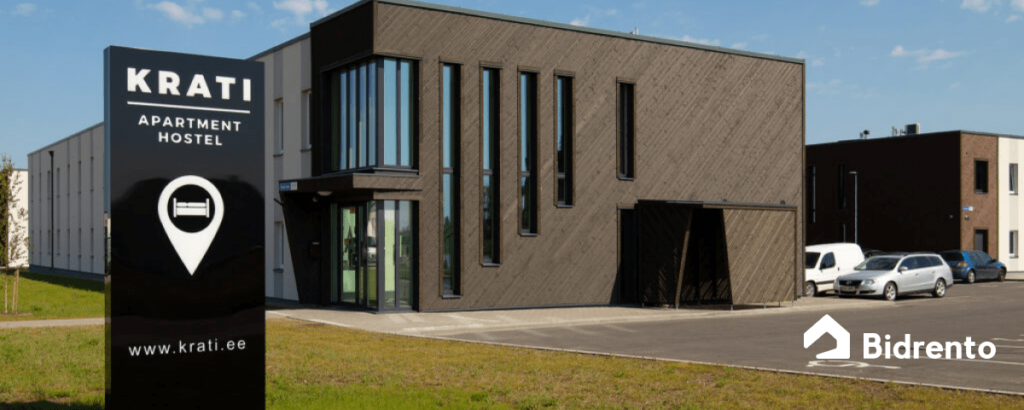
2. Triple Net Capital: Better Control Over Mixed-Use Properties
Triple Net Capital manages a blend of long- and short-term rentals, a challenge that once required juggling separate tools. With Bidrento, they brought all lease data, tenant interactions, and financial records into one system. This change helped them streamline invoicing, track tenant needs, and reduce vacancy times, creating a smoother operation across both property types.
3. Eften Living: Digitalising Build-to-Rent Operations
Eften Living’s build-to-rent properties needed a fully digital system to handle leases and maintenance across multiple regions. By using Bidrento, they automated everything from tenant onboarding to compliance tracking, creating a seamless experience for tenants and managers alike. Automated alerts for maintenance and local regulation updates helped Eften keep properties up-to-date while reducing manual work.
Key Benefits for Growing Portfolios
For large portfolios, old methods and manual data entry lead to constant challenges. From missed deadlines to disorganised records, managing leases across multiple properties often creates extra work and stress. The right tools can reduce your workload and improve organisation:
- Time Saved with Automation: Kavi Capital reduced repetitive tasks, freeing up time for more strategic planning.
- Organised Lease Data: Triple Net Capital saw smoother tenant interactions and faster responses with all data in one place.
- Automated Compliance: Eften Living kept up with varied regulations across locations without relying on manual tracking.
Ready to see how Bidrento can help simplify your lease management? Sign up for a free demo to explore all its benefits.
Lease Management FAQs
What is a lease management system?
A lease management system is software designed to help property managers track and organise all their lease information in one centralised place. It allows you to handle lease dates, rent payments, tenant information, and compliance details across a large property portfolio. This system reduces the need for manual work by automating tasks and keeping all data up-to-date and easy to accesst
Why is a lease management system important for large portfolios?
For large portfolios, a lease management system makes daily tasks easier to manage by reducing the risks of errors, missed payments, or deadlines. It organises complex lease information and tracks tenant interactions, rent adjustments, and compliance dates, making operations more efficient and less prone to costly mistakes
What are the main benefits of using Bidrento over spreadsheets?
Bidrento automates many tasks that are difficult to manage with spreadsheets, like rent tracking, tenant communication, and financial reporting. Unlike spreadsheets, Bidrento updates information in real-time and provides automated reminders for important deadlines. This helps property managers avoid errors, saves time, and keeps the portfolio organised
How does Bidrento help with compliance management?
Bidrento offers automated alerts for compliance deadlines, inspections, and document renewals, helping property managers stay on top of all regulatory requirements. This feature reduces the risk of missing important dates, which could otherwise lead to fines or penalties. Bidrento’s compliance tracking is especially useful for large portfolios with properties in different locations, each with unique rules.
What makes Bidrento suitable for both short- and long-term rental management?
Bidrento is versatile enough to handle both short- and long-term rentals, which is ideal for portfolios with a mix of property types. It centralises lease information, rent schedules, and tenant interactions for easy tracking and supports automatic rent reminders and lease renewals. This setup is useful for companies like Triple Net Capital, which use Bidrento to manage both types of rentals more efficiently
How secure is Bidrento for storing lease and tenant data?
Bidrento offers strong security features, including data encryption, secure login, and regular backups. These features keep all lease and tenant data safe, which is especially important for property managers handling sensitive information for a large number of tenants. Bidrento’s cloud-based setup also means that updates and security patches are handled automatically.
